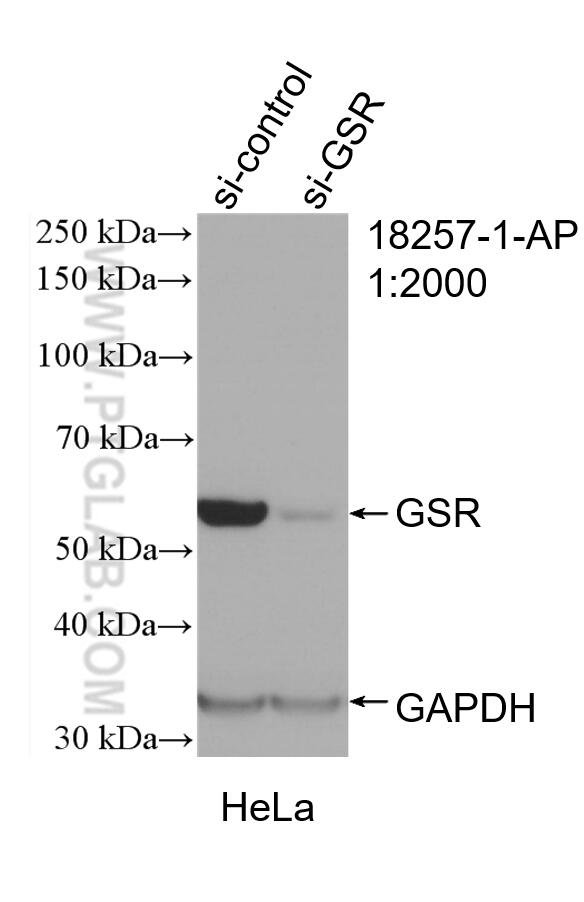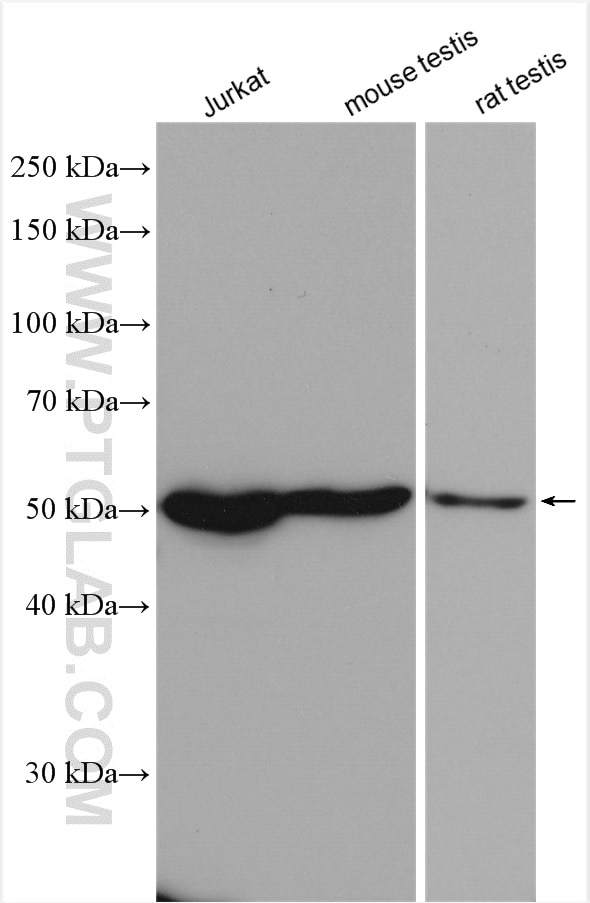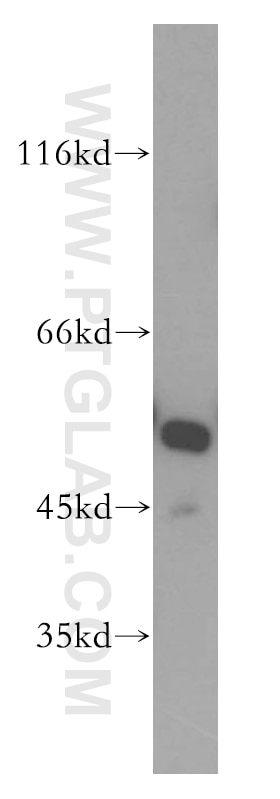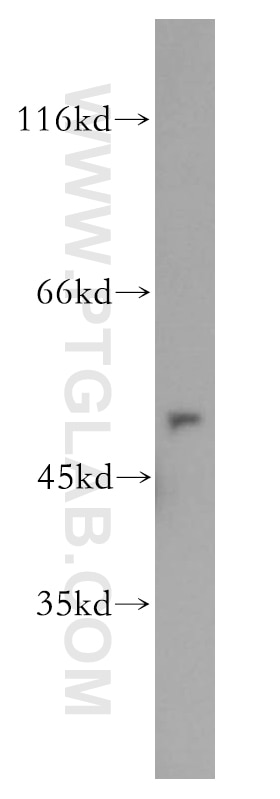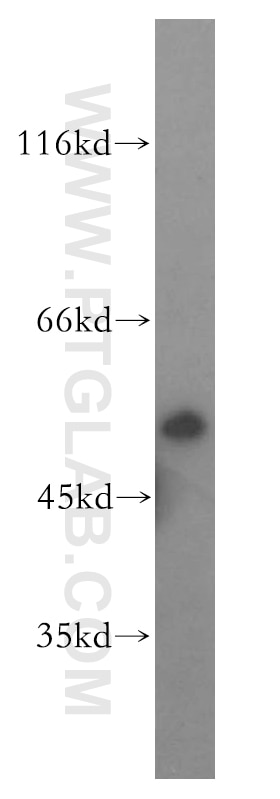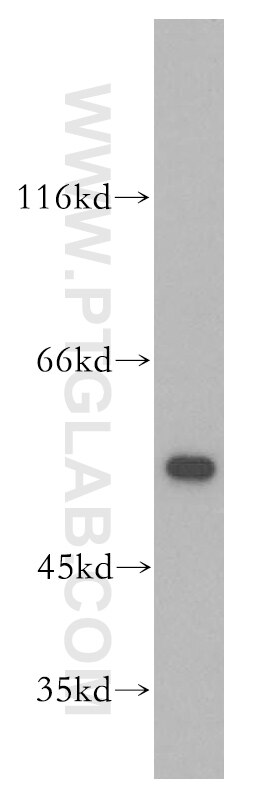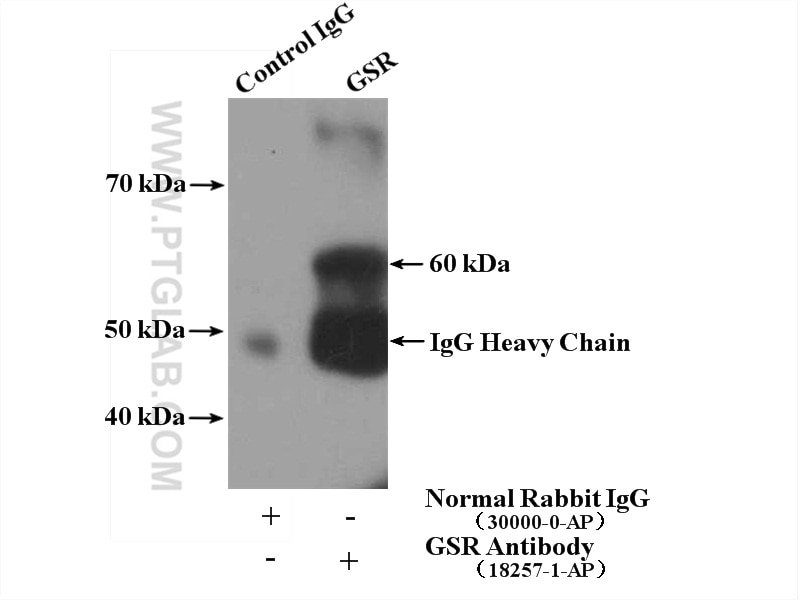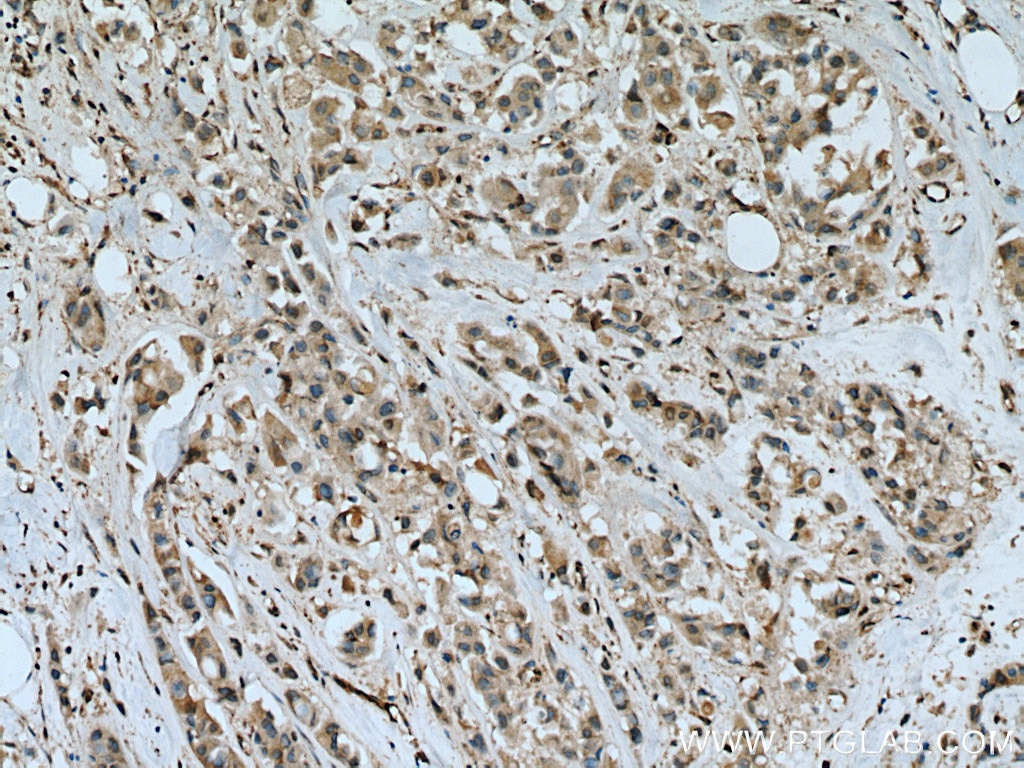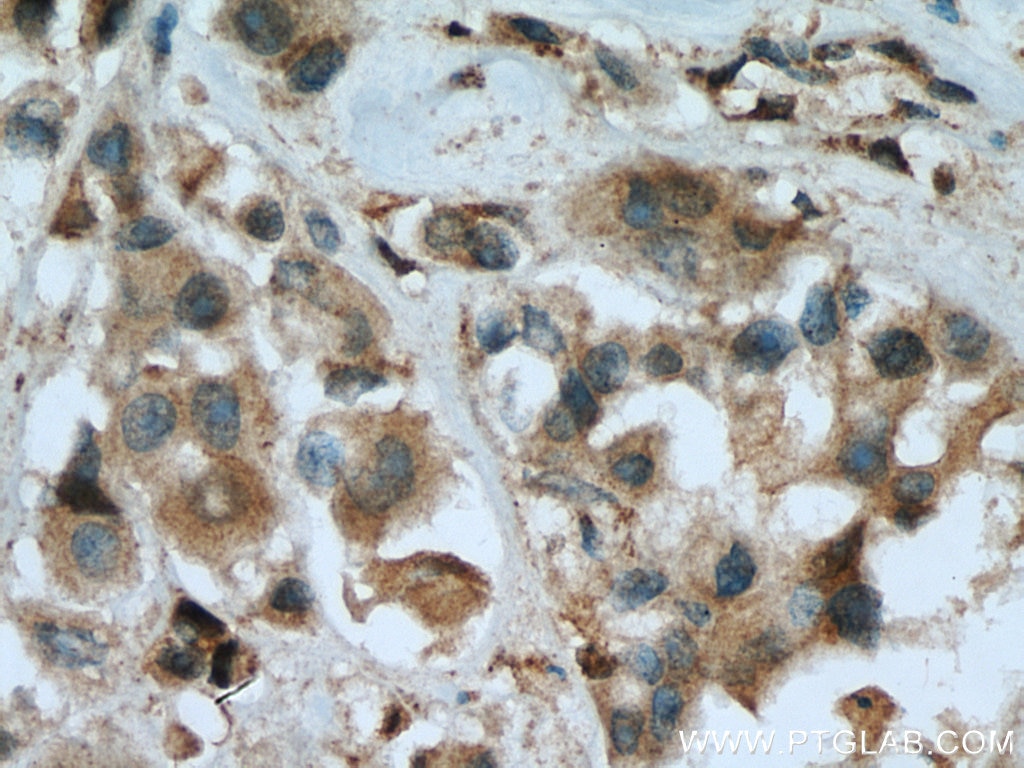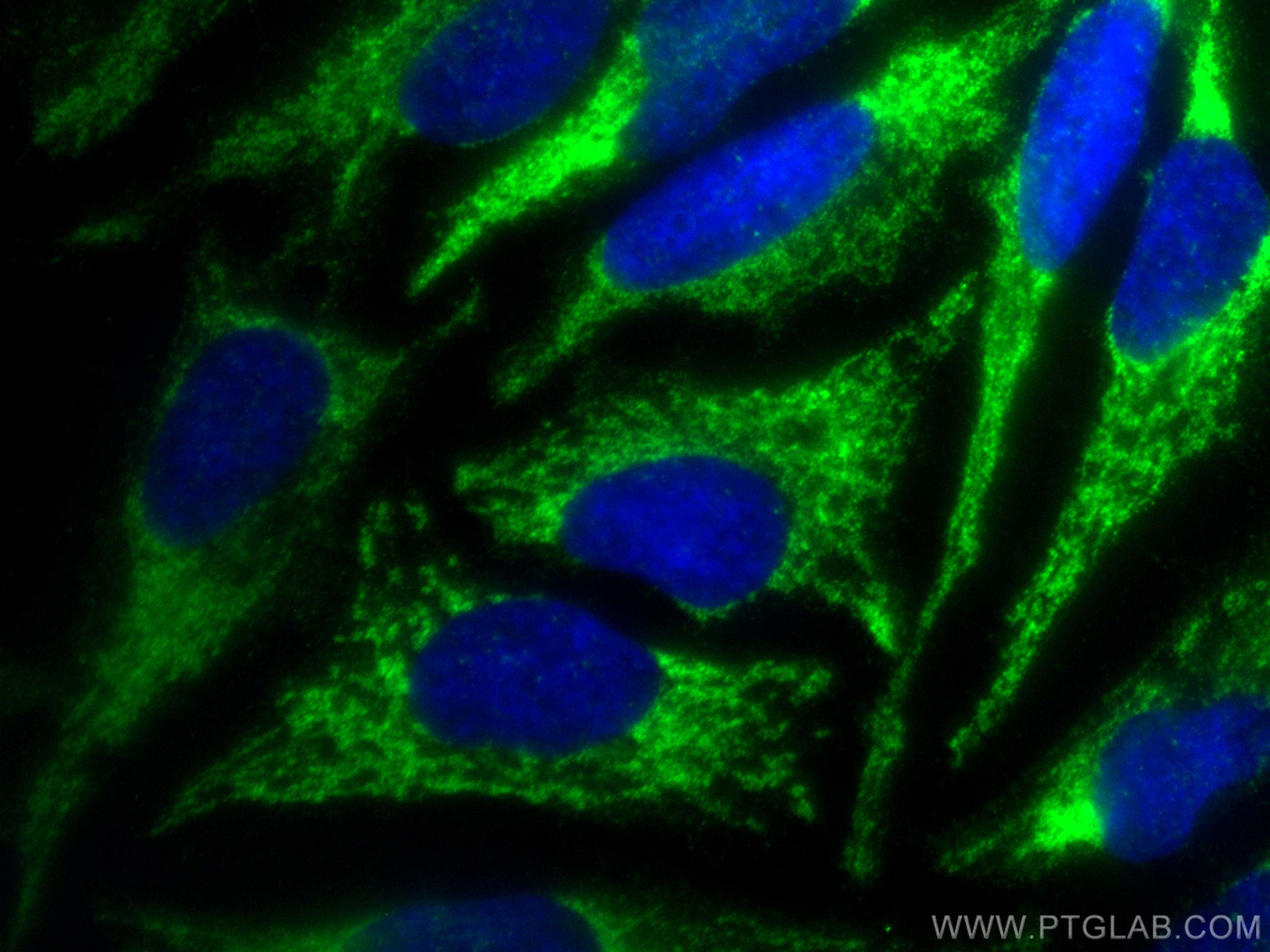- Featured Product
- KD/KO Validated
GSR Polyklonaler Antikörper
GSR Polyklonal Antikörper für IF, IHC, IP, WB, ELISA
Wirt / Isotyp
Kaninchen / IgG
Getestete Reaktivität
human, Maus, Ratte
Anwendung
WB, IP, IHC, IF, ELISA
Konjugation
Unkonjugiert
Kat-Nr. : 18257-1-AP
Synonyme
Galerie der Validierungsdaten
Geprüfte Anwendungen
| Erfolgreiche Detektion in WB | Jurkat-Zellen, HeLa-Zellen, humanes Plazenta-Gewebe, Maushodengewebe, Mauslungengewebe, Rattenhodengewebe |
| Erfolgreiche IP | HeLa-Zellen |
| Erfolgreiche Detektion in IHC | humanes Mammakarzinomgewebe Hinweis: Antigendemaskierung mit TE-Puffer pH 9,0 empfohlen. (*) Wahlweise kann die Antigendemaskierung auch mit Citratpuffer pH 6,0 erfolgen. |
| Erfolgreiche Detektion in IF | HeLa-Zellen |
Empfohlene Verdünnung
| Anwendung | Verdünnung |
|---|---|
| Western Blot (WB) | WB : 1:1000-1:4000 |
| Immunpräzipitation (IP) | IP : 0.5-4.0 ug for 1.0-3.0 mg of total protein lysate |
| Immunhistochemie (IHC) | IHC : 1:200-1:800 |
| Immunfluoreszenz (IF) | IF : 1:50-1:500 |
| It is recommended that this reagent should be titrated in each testing system to obtain optimal results. | |
| Sample-dependent, check data in validation data gallery | |
Veröffentlichte Anwendungen
| KD/KO | See 1 publications below |
| WB | See 18 publications below |
Produktinformation
18257-1-AP bindet in WB, IP, IHC, IF, ELISA GSR und zeigt Reaktivität mit human, Maus, Ratten
| Getestete Reaktivität | human, Maus, Ratte |
| In Publikationen genannte Reaktivität | human, Maus, Ratte |
| Wirt / Isotyp | Kaninchen / IgG |
| Klonalität | Polyklonal |
| Typ | Antikörper |
| Immunogen | GSR fusion protein Ag13080 |
| Vollständiger Name | glutathione reductase |
| Berechnetes Molekulargewicht | 522 aa, 56 kDa |
| Beobachtetes Molekulargewicht | 52-55 kDa |
| GenBank-Zugangsnummer | BC069244 |
| Gene symbol | GSR |
| Gene ID (NCBI) | 2936 |
| Konjugation | Unkonjugiert |
| Form | Liquid |
| Reinigungsmethode | Antigen-Affinitätsreinigung |
| Lagerungspuffer | PBS mit 0.02% Natriumazid und 50% Glycerin pH 7.3. |
| Lagerungsbedingungen | Bei -20°C lagern. Nach dem Versand ein Jahr lang stabil Aliquotieren ist bei -20oC Lagerung nicht notwendig. 20ul Größen enthalten 0,1% BSA. |
Hintergrundinformationen
GSR(Glutathione reductase) is also named as GLUR, GRD1 and belongs to the class-I pyridine nucleotide-disulfide oxidoreductase family.It was first found in a black American a variant red cell GSR characterized by greater electrophoretic mobility and enzyme activity per unit of hemoglobin than the normal.This protein maintains high levels of reduced glutathione in the cytosol.It has 5 isoforms produced by alternative splicing and alternative initiation.It can also exsit as a homodimer with the molecular weight of 110KDa(PMID:8631352).This antibody is specific to GSR.
Protokolle
| Produktspezifische Protokolle | |
|---|---|
| WB protocol for GSR antibody 18257-1-AP | Protokoll herunterladen |
| IHC protocol for GSR antibody 18257-1-AP | Protokoll herunterladen |
| IF protocol for GSR antibody 18257-1-AP | Protokoll herunterladen |
| IP protocol for GSR antibody 18257-1-AP | Protokoll herunterladen |
| Standard-Protokolle | |
|---|---|
| Klicken Sie hier, um unsere Standardprotokolle anzuzeigen |
Publikationen
| Species | Application | Title |
|---|---|---|
Redox Biol Fast regulation of the NF-κB signalling pathway in human skeletal muscle revealed by high-intensity exercise and ischaemia at exhaustion: Role of oxygenation and metabolite accumulation. | ||
Cell Rep The Ets transcription factor GABP is a component of the hippo pathway essential for growth and antioxidant defense. | ||
Nutrients A Mango Leaf Extract (Zynamite®) Combined with Quercetin Has Exercise-Mimetic Properties in Human Skeletal Muscle | ||
Pharmacol Res Phyto-sesquiterpene lactones DET and DETD-35 induce ferroptosis in vemurafenib sensitive and resistant melanoma via GPX4 inhibition and metabolic reprogramming. | ||
Free Radic Biol Med Glutaredoxins concomitant with optimal ROS activate AMPK through S-glutathionylation to improve glucose metabolism in type 2 diabetes. | ||
Free Radic Biol Med Antioxidant defense in quiescent cells determines selectivity of electron transport chain inhibition-induced cell death. |
